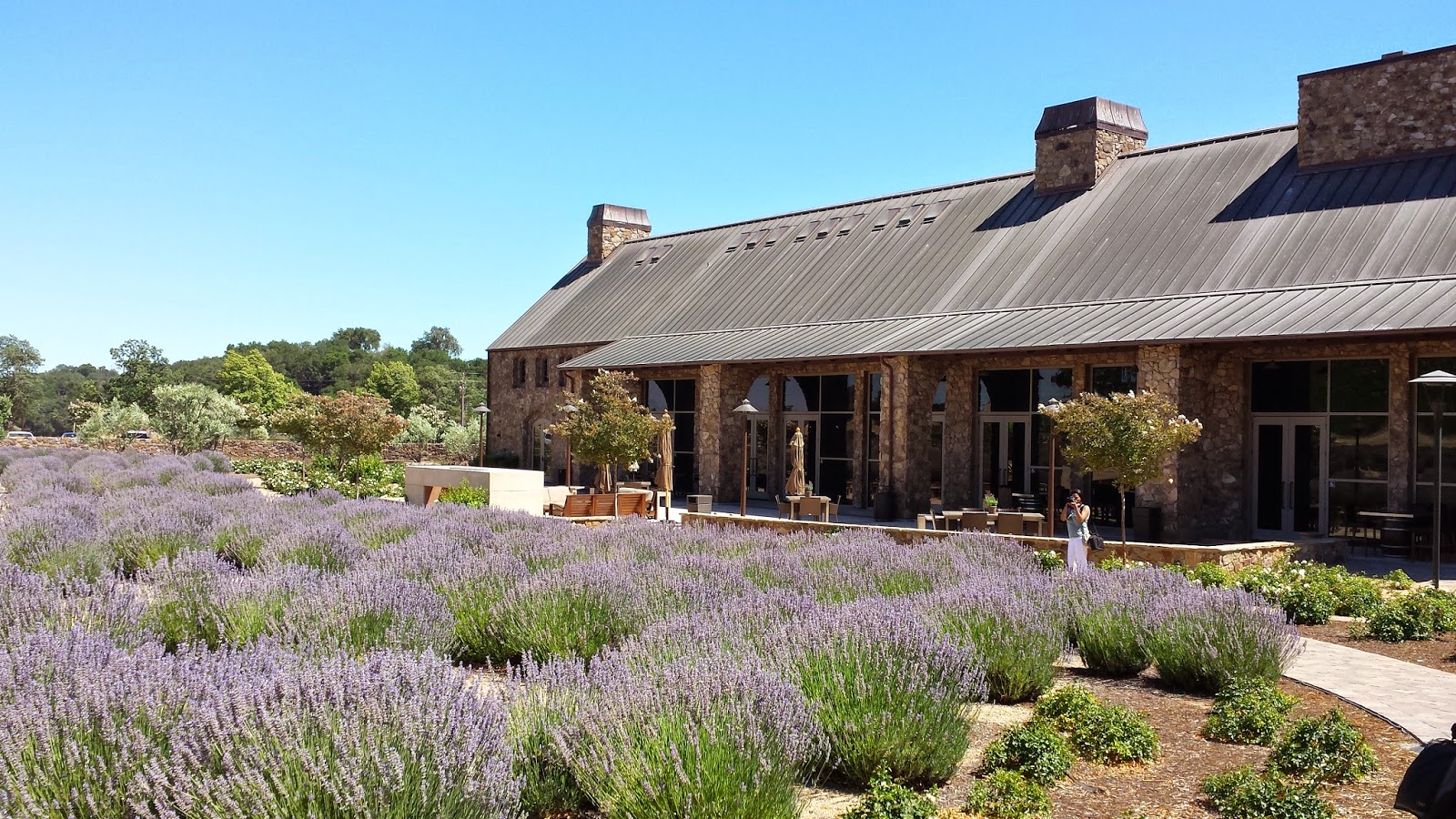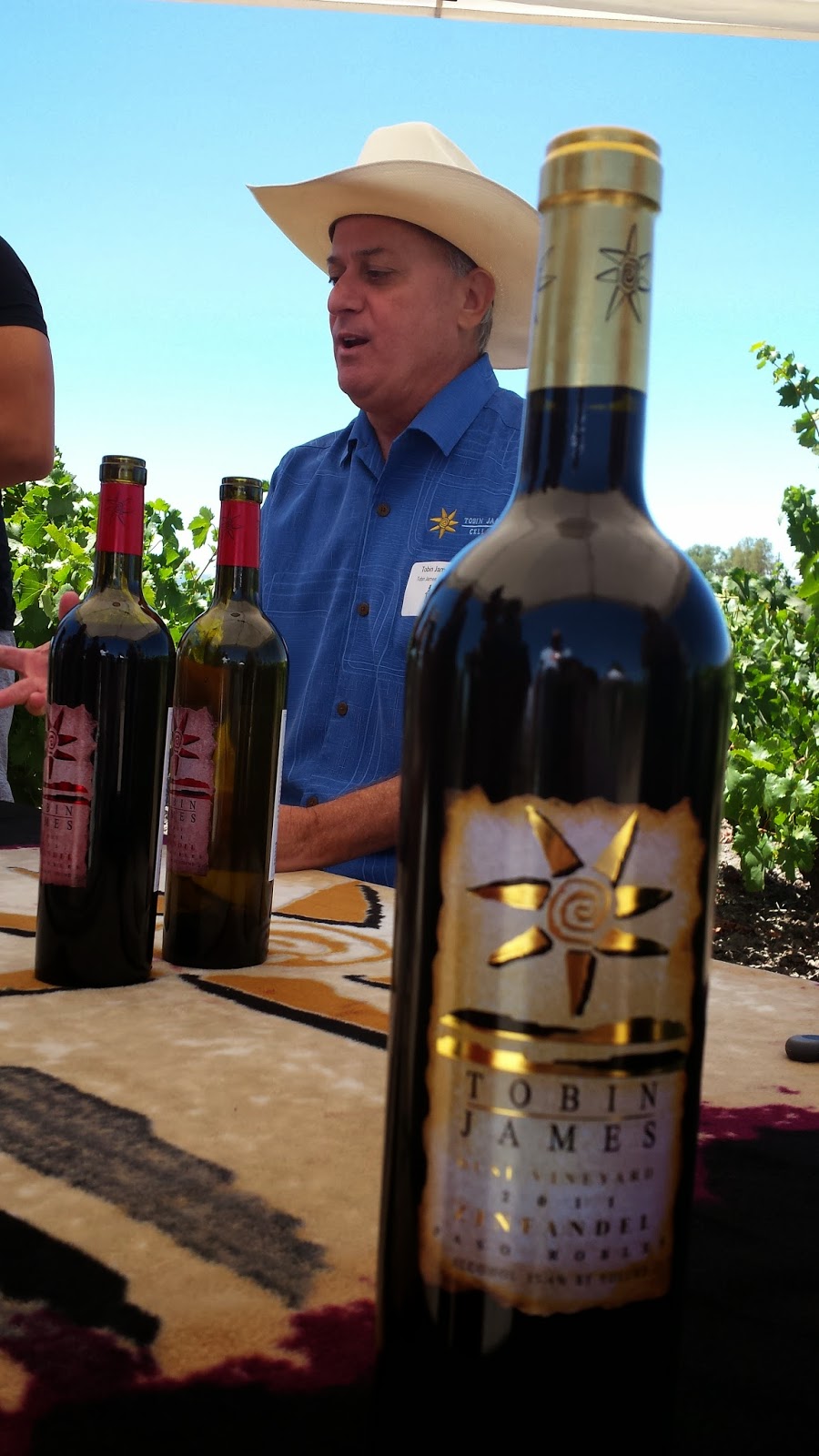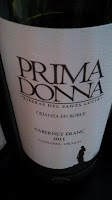
While attending the 2014
Wine Bloggers Conference, I jumped at the opportunity to participate in the Paso Robles Pre-tour. The mission? To visit six wineries and taste wines from 50 producers from the region in 24 hours. Most of the participants rendezvoused at the San Jose Airport and were picked up by Chris Taranto, Communications Director of the
Paso Robles Wine Country Alliance and Sarah Wolcott (representing Zephyr Adventures & WBC14). A charter bus then transported us the hour plus ride to the Paso Robles AVA -- California’s largest and most diverse AVA and best known for their Zinfandel and Cabernet Sauvignon.

Our first stop was
Niner Wine Estates where we met the remaining participants and were greeting by a panel discussion on
Paso Robles History and Terroir. The roundtable including pioneers like Gary Eberle of
Eberle Winery, Jason Diefenderfer of
Hope Family Wines, and Augi Hug of
Hug Cellars as well as our host Patrick Muran of
Niner Wine Estates, Niels Udsen of
Castoro Cellars, and Stephanie Terrizzi of
Giornata. This tasting showcased the diversity of Paso Robles while sampling wines made from Cabernet, Zinfandel, Rhone blends, as well as Spanish and Italian varietals. The Castoro 2013 Balena White Blend (Whale Rock Estate) seemed to encapsulate this diversity being a an interesting blend of Pinto Grigio, Grenache Blanc, and Falanghina. The Giornata 2011 Nebbiolo Luna Matte Vineyard was another tasty wine and Stephanie Terrizzi painfully described her travails in growing this stubborn grape. Paso wines can also age. Jason Diefenderfer opened their 2002 Treana Red (CS, Merlot, Syrah) which had lost some acids, but was quite flavorful with a fig interior. (I had previous tasting a 2003 Eberle CS that was still youthful at
Nomacorc tour.) We also learned about the history of the region from Gary Eberle particularly the 1970's with the rise of Cabernet Sauvignon and the first commercial Syrah vines.
From Niner we traveled over rolling hills of vineyards for our second destination:
Tablas Creek Vineyard. Here we learned about the prestigious Rhone inspired brand as well as tasted wines from a few other Paso Rhone producers. A more detailed description can be found at
#WBC14 Paso Robles Excursion: Tablas Creek Vineyard.

Our first day of the pre-tour culminated with the
Paso Robles (Cabernet and Bordeaux) Collective - an organization which "strives to promote the full potential of the Paso Robles AVA in producing superior-quality, classic and age-worthy Cabernet and Bordeaux varietals". Our host was
DAOU Vineyards and what an amazing setting - both the winery's architecture and the surrounding views. Needless to say, there was a dozens of nice wines offered as a large majority of the collective's members participated. There were many standouts including the wines from
Red Soles Winery,
J. Lohr Winery,
Villa San-Juliette Winery,
Vina Robles, and
Sextant Wines. In fact, the Sextant 2012 X-Series Marselan Cabernet X Grenache was one of the most interesting wines of the trip. The two J Lohr Cuvees were quite delicious as well. During the evening we experienced the full diurnal temperature change that benefits Paso Robles as our shorts and t-shirts were covered with jackets and sweatshirts.

We started day two at
Vina Robles and a discussion on
The Paso Robles AVA. The presentation was lead by Steve Lohr of
J. Lohr Winery and included Kevin Willenborg of
Vina Robles, Mike Sinor of
Ancient Peaks Winery, Justin Smith of
Saxum Vineyards, and Cris
Cherry of
Villa Creek Winery. The most important fact we learned is that the Paso Robles Wine Alliance has petitioned the TTP to split the broad Paso Robles AVA into 11 separate sub-AVAs. The winemakers present discussed how each region differed based on weather (Templeton Gap) and soil. The predominate soil is bedrock derived from marine and volcanic activity - particularly oyster fossils. If approved, 85% of the grapes must be source from that appellation and they will utilize conjunctive labeling where both the sub AVA and the Paso Robles AVA will be included. The wine in this tasting was quite delicious and centered on Rhone and Bordeaux varieties.

From Vina Robles we rode to the iconic
J Dusi Wines, where Zinfandel vines brought directly from Italy were planted in 1924 by Sylvester and Caterina Dusi. The original vines are still in use, old and gnarly with holes forming at the vine's base. Third generation Janell Dusi greeted us along with four other wineries that source fruit from J Dusi:
Brochelle Vineyards,
Tobin James Cellars,
Turley Wine Cellars, and wines from winemaker McPrice Meyers. We tasted their wines and learned about their history steps from the very vines that provide the fruit.


At separate tents we experienced a comparative tasting of Dusi sourced 2012 Zinfandel from J Dusi, Brochelle, and Turley. The base for each wine was similar, full jammy flavors with a creamy texture, and usually differed at the tail - with varying degrees of spice and acids. For each group, Tobin James spun an entertaining tale of his entrance to wine making and apprenticeship at Eberle to the creation of his label. They poured a delicious 2011 Dusi Zinfandel as well as two reserve wines. I was particularly fond of two brands from McPrice Meyers.
Barrel 27 Wine Company is his brand and he poured the 2012 Paso Robles Zinfandel as well as a fascinating barrel sample of PFP 21.
Paydirt Wines was the second brand, a collaboration with Patrick McNeil, and he featured the 2012 Paso Robles Red a blend of Zinfandel, Grenache, Syrah, Mourvedre, and Petite Sirah. This wine has that WOW factor, juicy, creamy, and simply delicious.

Our final stop in Paso Robles was
Wild Horse Winery & Vineyards, named for the wild mustangs that once inhabited the region.The winery opened in 1983 selling a Cabernet Sauvignon and Pinot Noir but today produce a plethora of wines from Blaufrankisch, Verdelho, Pinot Noir, Malvasia Bianca, Rose, Merlot, Cabernet, Chadonnay, Zinfandel, Viognier, Malbec, and Syrah. We were greeted by

General Manger and Director of Winemaking Chrissy Whittmann and two refreshing wines their 2013 Central Coast Floyd Rosé and 2013 Paso Robles Verdelho. The Floyd Rosé (Pinot Noir, Cabernet Franc, and Sangiovese) is named after their resident llama Floyd (named after the legendary band Pink Floyd) - thus a proper name for a pink wine. Over lunch we sampled three other wines with gourmet tacos the 2012 Central Coast Chardonnay, 2011 Paso Robles Unbridled Merlot, and the 2012 Central Coast Pinot Noir 2012. All three were approachable and easy drinking - nice entrance wines. In the tasting room I discovered several very nice Pinot Noirs as well as a fruit forward new world Blaufrankisch. A pleasant end that illustrates, once again, the diversity of Paso Robles. Cheers.
 Last month I received samples from Oak Ridge Winery, specifically four wines focusing on their unique Old Soul brand. I say unique in the sense that this brand focuses on non-Zinfandel grape varieties and as the oldest winery in
Lodi, these grapes have an "old soul". Oak Ridge's Zin is rather tasty, so was excited to get started.
Last month I received samples from Oak Ridge Winery, specifically four wines focusing on their unique Old Soul brand. I say unique in the sense that this brand focuses on non-Zinfandel grape varieties and as the oldest winery in
Lodi, these grapes have an "old soul". Oak Ridge's Zin is rather tasty, so was excited to get started.






































